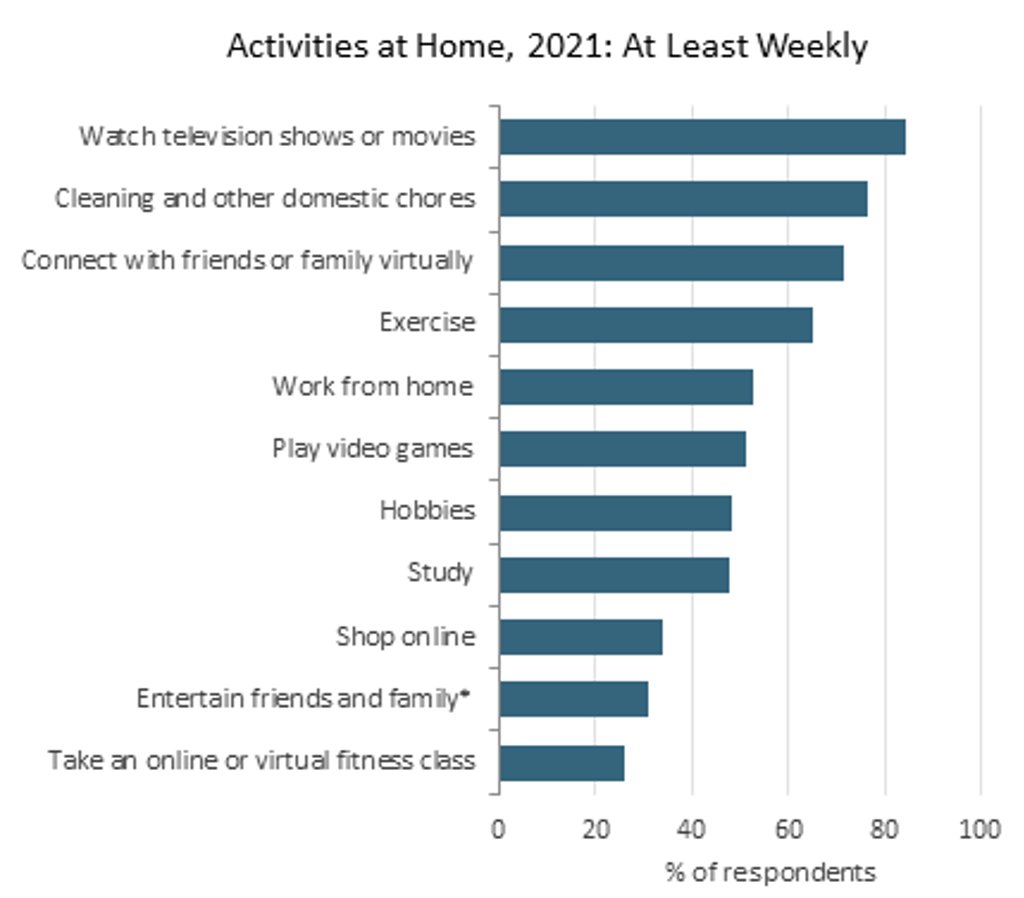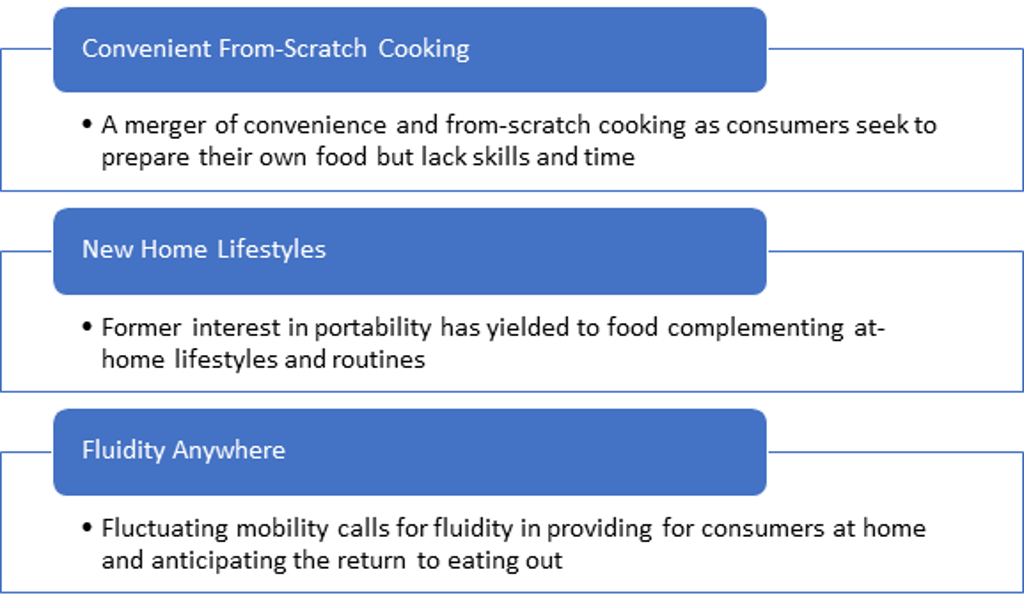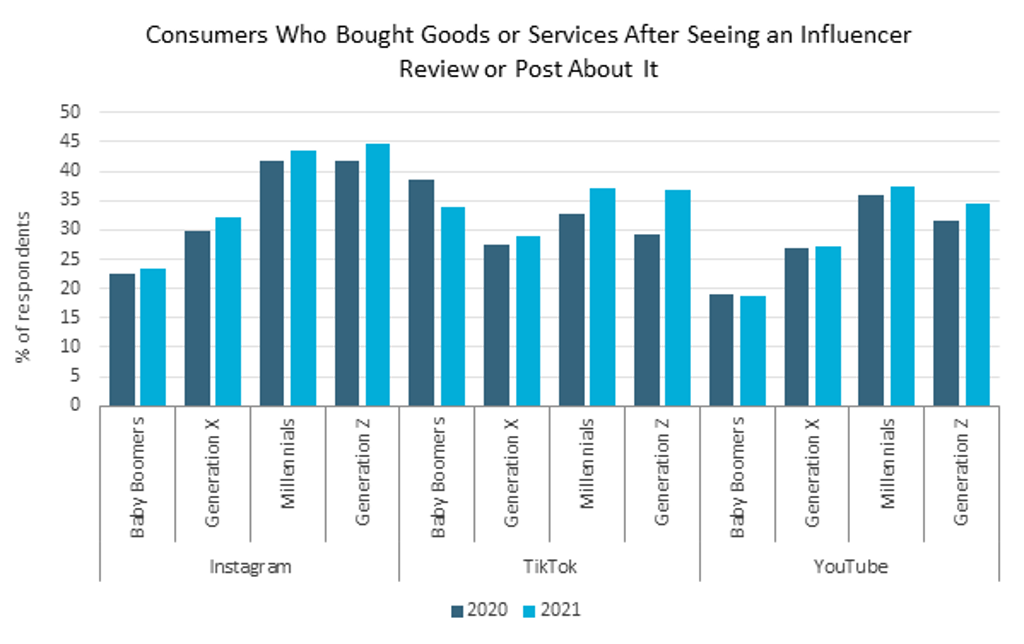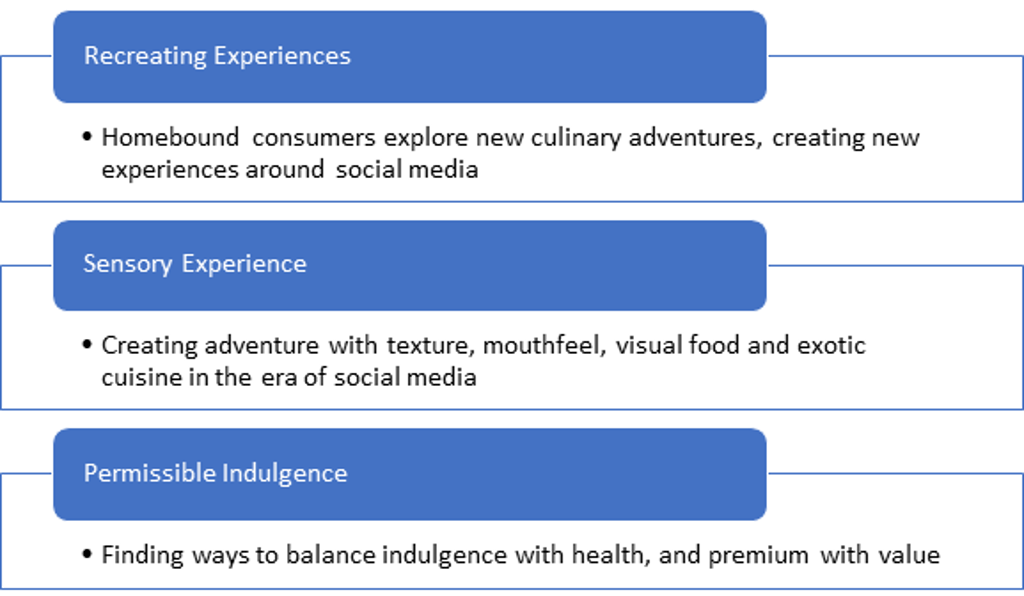The Evolution of Eating Occasions
Eating occasions are becoming more complex as consumers balance demand for healthy, flavourful food with increasingly time-pressed lives. This has been amplified as the pandemic uproots traditional routines. Packaged food manufacturers and foodservice operators are vying to meet demand for convenient food that is also experiential and indulgent.
Evolving needs of the time-pressed consumer
The movement towards fulfilling the unlimited potential of “anywhere” in eating occasions took a 180-degree turn following the onset of the pandemic, as in many markets producers focused solely on in-home. At the same time, “anytime” became more fluid, as consumers could access food from their own pantries and turned to takeaway food from restaurants more regularly.
At home, convenience and simplification of complex recipes have taken priority. On-the-go meal solutions that have previously transformed traditional retail outlets such as convenience stores are now repositioning as an essential solution that fits seamlessly with other aspects of consumer lifestyles. 
Note: *Refers to friends and family who do not live with survey respondent.
Key focus areas for businesses looking to leverage these developments include:
Sating consumer hunger for experiential eating occasions has also become a focus. Previous on-trend consumer habits such as café hopping, social brunch occasions and exploring new restaurants were forced to cease, despite continued consumer desire and interest in these activities.
Many consumers craving the social aspect of food utilise social media to share cooking creations and enjoyment. This extends beyond visuals to also include texture and exotic flavours, hence triggering interest in experimenting and creating food, often using digital platforms for inspiration and to share.

Fielded Feb-Mar; 2020 n=25,692, 2021 n=27,756
Note: This question is shown only to respondents who indicated to have used that social media platform in the past month;
A more hands-on role in the kitchen has also given consumers greater control over what goes into their food, allowing them to form limits to indulgence where they might have been less aware previously. Value for money and brand value have also become more important than ever.
Key focus areas for businesses looking to leverage these developments include:

- Stay relevant at every stage of food preparation as consumers seek immediacy and fluidity in their food. With abundant food options and meal delivery becoming increasingly prominent globally, consumers are expecting a shorter time between deciding what to eat and having their food prepared. In fact, 49% of global consumers selected “Longer than estimated wait for delivery” as a common challenge with foodservice delivery in 2021, according to Euromonitor International’s Voice of the Consumer: Digital Survey, indicating that challenges remain despite the rise of delivery services.
- Provide complementary products and guide consumers as they explore and experiment with food on their own. Dinner mixes, including meal kits, saw a 21% CAGR in retail value terms over 2015-2020, and the demand for convenient meal preparation aids has been on the increase since before the pandemic. Meal kits reported a surge in sales in 2020. As markets re-open, continued efforts to encourage consumer involvement in preparing food at home will be necessary to support continued growth.
- Blend food preparation and consumption with other aspects of consumer lifestyles. Household appliances and tools also play a major part in determining how willing consumers may be to prepare food and how they cook at home. For example, possession of microwave ovens in North America was at 96% of households in 2020, but only 26% in the Middle East and Africa, thus differentiating how regions may accept partially-prepared food or attitudes towards reheating.
Opportunities abound if innovation strategies evolve
The outlook for global consumer spend on food is expected to continue its upward trajectory to 2025. Notable markets include Hong Kong, which led per capita spend on food in 2020 and expected spend is set to grow by a 4% CAGR between 2020 and 2025. Even emerging markets, for example those in the Middle East and Africa weighed down by negative economic uncertainties, are also expected to spend more in future. Markets such as South Africa represent bright spots for businesses in that region.
Companies adapting to the changing demands and needs of consumers will play a key part in this continuing success. For the wider food ecosystem, companies must offer products that sit well with the changes in lifestyle, but are also able to remotely provide a premium eating experience.
For more insights, see the report The Evolution of Eating Occasions.
